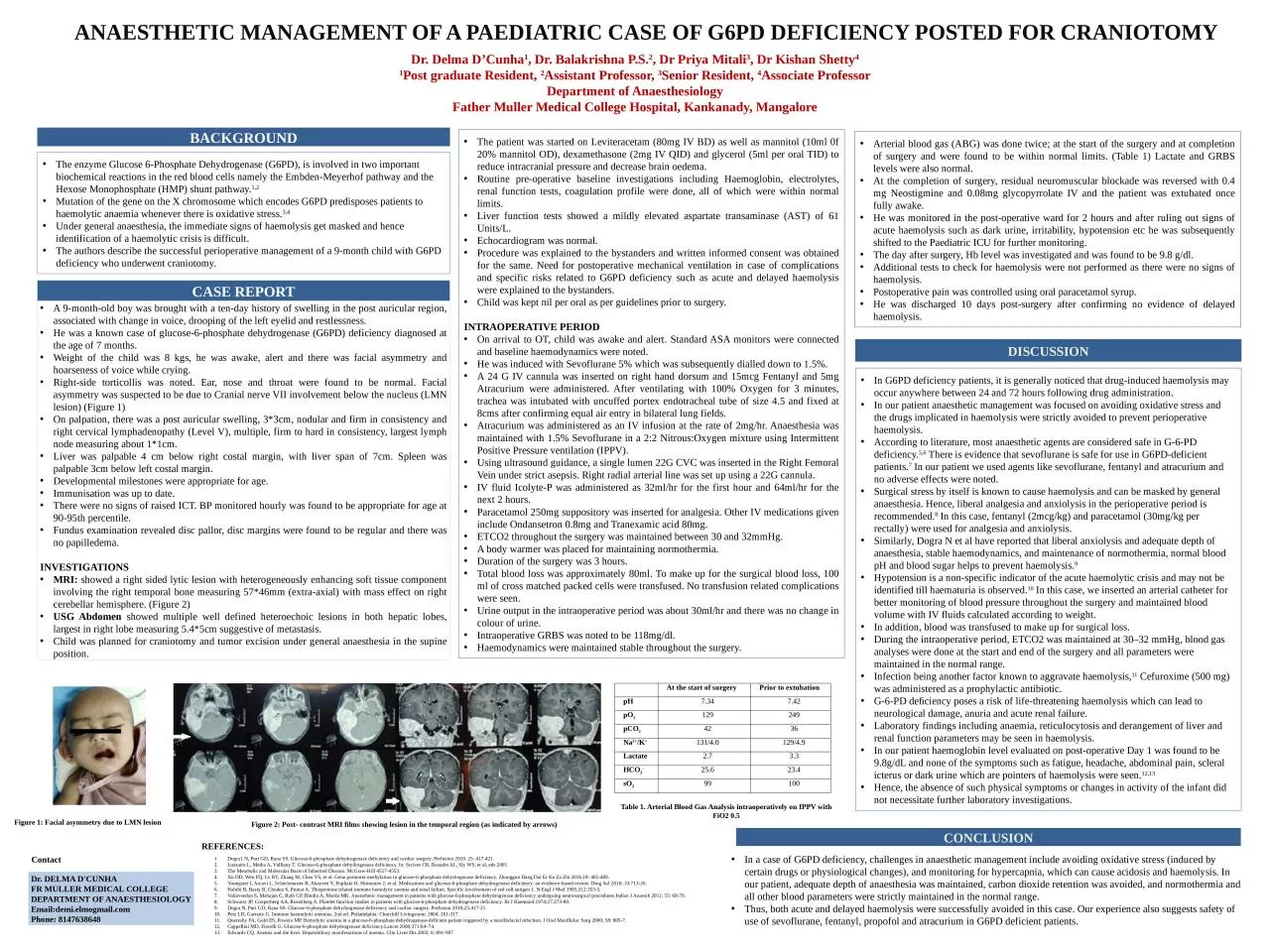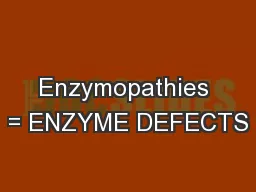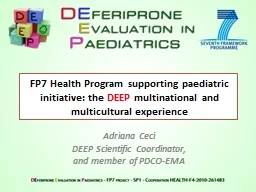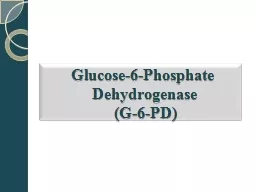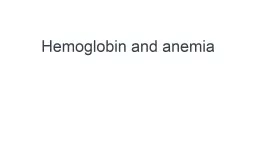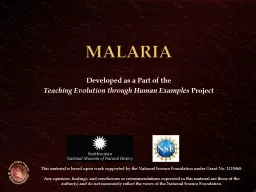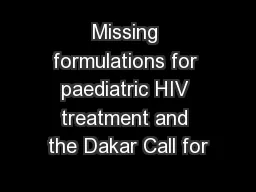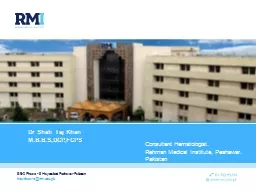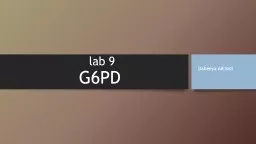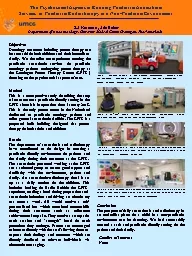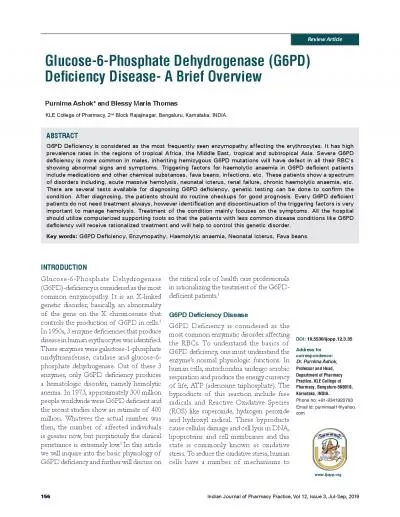PPT-ANAESTHETIC MANAGEMENT OF A PAEDIATRIC CASE OF G6PD DEFICIENCY POSTED FOR CRANIOTOMY
Author : iris | Published Date : 2022-06-11
Dr Delma DCunha 1 Dr Balakrishna PS 2 Dr Priya Mitali 3 Dr Kishan Shetty 4 1 Post graduate Resident 2 Assistant Professor 3 Senior Resident 4 Associate Professor
Presentation Embed Code
Download Presentation
Download Presentation The PPT/PDF document "ANAESTHETIC MANAGEMENT OF A PAEDIATRIC C..." is the property of its rightful owner. Permission is granted to download and print the materials on this website for personal, non-commercial use only, and to display it on your personal computer provided you do not modify the materials and that you retain all copyright notices contained in the materials. By downloading content from our website, you accept the terms of this agreement.
ANAESTHETIC MANAGEMENT OF A PAEDIATRIC CASE OF G6PD DEFICIENCY POSTED FOR CRANIOTOMY: Transcript
Download Rules Of Document
"ANAESTHETIC MANAGEMENT OF A PAEDIATRIC CASE OF G6PD DEFICIENCY POSTED FOR CRANIOTOMY"The content belongs to its owner. You may download and print it for personal use, without modification, and keep all copyright notices. By downloading, you agree to these terms.
Related Documents

